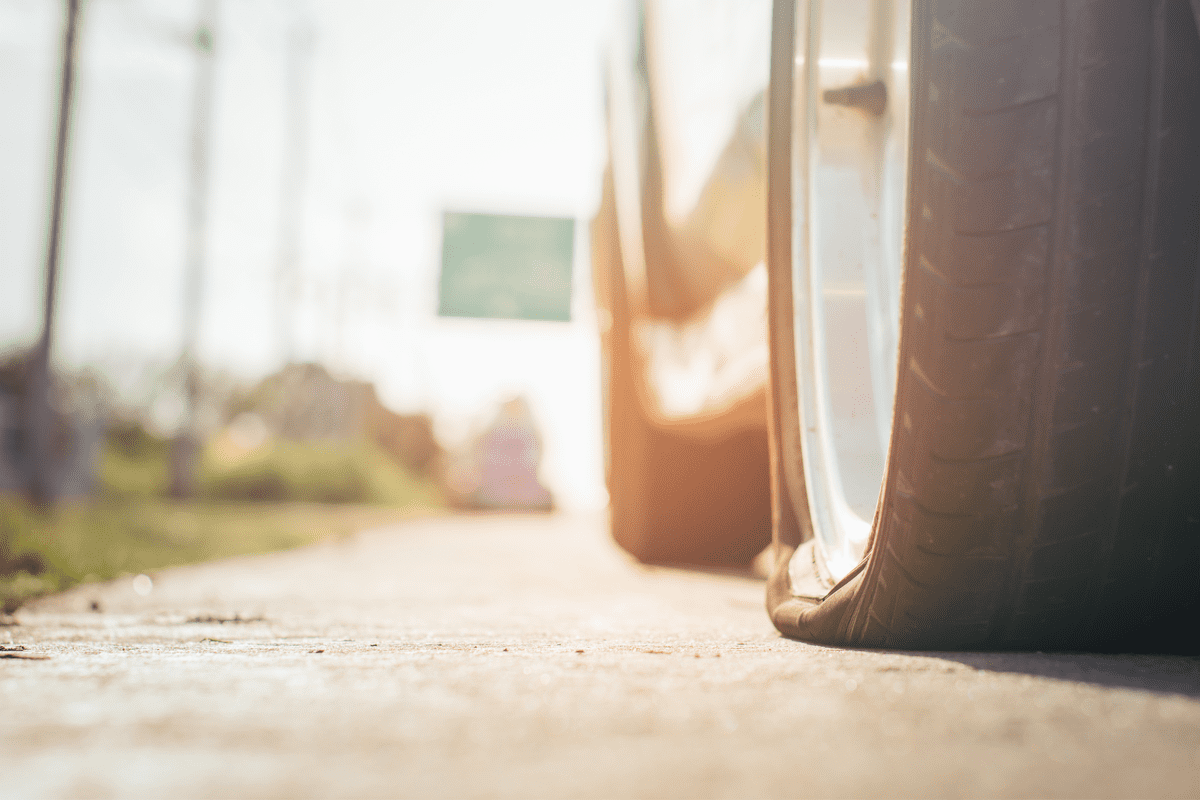
Partner at Charbonnet Law Firm LLC
Practice Areas: Car Accident, Slip-and-Fall, Work-related Injury

When you’re driving alongside an 18-wheeler on the highway, the last thing you expect is a tire to explode and send a massive truck swerving across the road. Yet this happens more often than you might think. Truck tire blowouts are not only dangerous — they can lead to multi-vehicle accidents, serious injuries, and complex legal questions about fault.
In this blog, we’ll explore what causes truck tire blowouts, who may be responsible when one leads to a crash, and how liability is determined in Louisiana. This article might help you understand your rights and what to do if you or someone you care about was hurt in a truck tire blowout accident. It will assist you in comprehending your rights and the following course of action.
A blown-out tire can happen in a second, but it’s usually the result of poor maintenance, equipment failure, or unsafe driving practices. For large commercial trucks, a blowout can quickly turn dangerous because of the truck’s size and weight. Some of the most common causes include:
Improper maintenance is one of the leading factors. Trucking companies and drivers are required by federal law to inspect and maintain their tires. Underinflated tires, worn tread, or visible damage that goes unaddressed can all lead to failure on the road.
Overloaded or uneven cargo can also stress tires beyond their limits. If the truck is carrying more weight than it should, or if the weight isn’t distributed correctly, it increases the pressure on certain tires and raises the chance of a blowout.
Defective tires may be the fault of a manufacturer. If a tire has a design flaw or was not built to withstand long-haul demands, the company that made or sold it may be liable.
Road hazards and poor conditions such as potholes, debris, or poorly maintained highways can trigger a blowout even when the truck is in good condition.
According to FMCSA regulations, all tires on a commercial motor vehicle must be properly inflated and free from dangerous wear or damage. Failing to comply can be considered negligence.
In Louisiana, fault in a tire blowout accident depends on whether negligence played a role. A blowout alone doesn’t mean someone is at fault, but if it was preventable—like with proper inspections or safe loading—liability may apply. Under Louisiana’s pure comparative fault system, you can still recover compensation even if you’re partly at fault, though your share of the blame reduces your recovery.
After a truck tire blowout accident, figuring out who is legally responsible takes a closer look at all the moving parts. Several parties could potentially share liability:
The truck driver may be at fault if they failed to check their tires, ignored warning signs, or drove recklessly (e.g., speeding or overloading the vehicle).
The trucking company is often legally responsible for its drivers and their equipment. This includes regular inspections, maintenance, and ensuring drivers follow safety regulations.
In 2020, at least 28 fatal truck crashes in the U.S. were directly caused by tire blowouts, according to the Fatality Analysis Reporting System (FARS).
Technology is helping reduce blowout-related crashes. Roadside sensors now detect underinflated or flat truck tires and alert weigh stations. Virginia alone flagged over 25,000 unsafe tires between 2020 and 2023. Many trucking companies are also using onboard tire pressure systems and investing in features like speed limiters and auto-braking—key tools for both human-operated and driverless trucks.
If you’ve been hurt in a crash caused by a blown truck tire, you may be able to file a personal injury claim against one or more parties. This process involves collecting evidence like:
You generally have one year from the date of the accident to file a claim in Louisiana. If successful, you may recover damages for medical expenses, lost income, pain and suffering, and vehicle repair or replacement.
|
Cause of Blowout |
Potentially Liable Party |
Legal Explanation |
| Underinflated tire | Driver or Trucking Company | Failure to inspect or maintain |
| Overloaded cargo | Trucking Company or Loader | Violation of weight distribution standards |
| Defective tire | Tire Manufacturer | Product liability for design or manufacturing defect |
| Road hazards (e.g. debris) | Government agency (rare cases) | Requires proof of prior knowledge and inaction |
| High-speed travel | Driver / Employer | Violating speed limits or safe operating standards |
Not always. If a defect or road hazard caused the blowout, the driver may not be liable. But if they skipped safety checks or drove recklessly, they could be held responsible.
Yes. Trucking companies can be liable if they fail to maintain their fleet, hire unqualified drivers, or don’t follow inspection requirements.
If a government agency was aware of the hazard and didn’t act in time, it could be liable. However, proving this is challenging and requires strong evidence.
They examine the truck, tires, driver records, onboard data, and physical evidence from the crash site. Experts may also reconstruct the accident to determine the cause.
Indeed. According to Louisiana law, victims have one year from the date of the accident to bring a personal injury claim. This deadline must not be missed.
You can seek compensation for medical bills, lost wages, pain and suffering, and property damage, depending on the specifics of your case.
Truck tire blowouts are more than just bad luck — they’re often preventable. Whether it’s poor maintenance, a defective tire, or an overloaded vehicle, the root cause can usually be traced to a mistake. When that mistake causes harm, the law allows victims to seek justice.
Understanding liability in a truck tire blowout accident isn’t always straightforward, but it’s critical if you’ve been injured. Knowing who may be responsible helps you take the proper legal steps.
Charbonnet Law Firm, LLC helps individuals in Louisiana who’ve been hurt in truck accidents, including those caused by tire blowouts. If you’re unsure about your next step, learning about your rights is a good place to start.

With over 50 years of legal experience serving families in the New Orleans area and surrounding Louisiana communities, our firm takes pride in providing clients with personalized legal services tailored to individual needs.